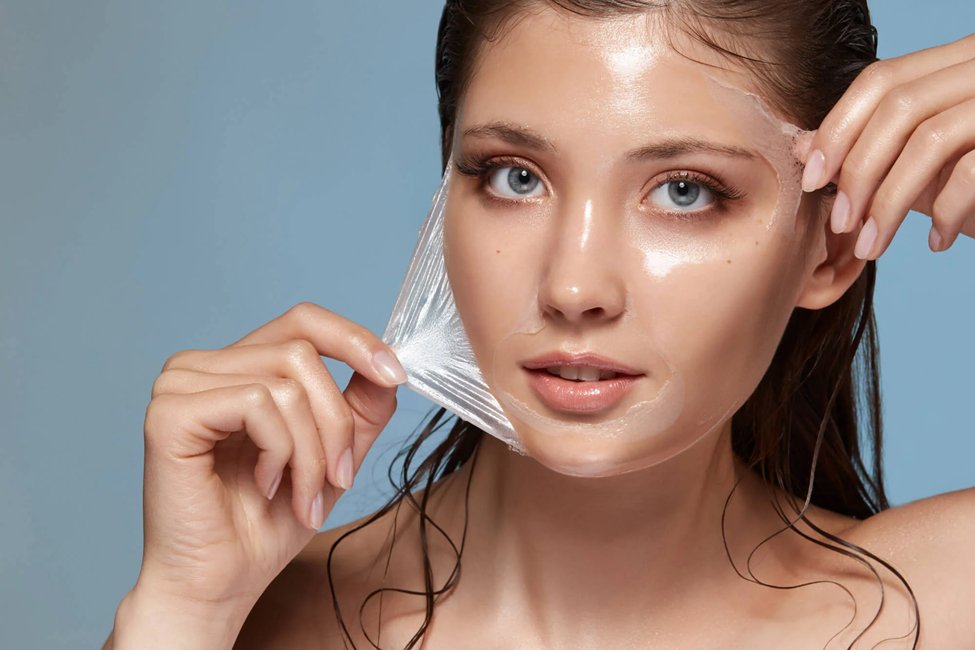Chemical Peeling
Chemical Peel Skin Treatment

A chemical peeling treatment in Bhopal is a skin procedure using chemical solutions to reduce scars, pigmentation, and wrinkles. Dr. Shikha Shivhare, a top dermatologist in Bhopal, specializes in this treatment, offering customized solutions for various skin concerns. The chemical peel exfoliates the skin, revealing smoother, rejuvenated skin underneath. Different peel strengths cater to different needs, with minimal downtime for superficial peels and more intensive results for medium to deep peels. Dr. Shivhare assesses each patient’s skin and tailors the chemical peeling treatment in Bhopal accordingly, providing post-treatment care instructions for optimal results.
What is a chemical peel?
A chemical peel is a cosmetic treatment involving the application of chemicals to remove the upper layer of the skin. This procedure can target areas such as the face, neck, and hands, effectively exfoliating the skin and prompting it to peel off over time. As the outer layer sheds, it reveals smoother, rejuvenated skin underneath. For those seeking this treatment in Bhopal, chemical peeling services are available through experienced professionals like Dr. Shikha Shivhare, a renowned dermatologist specializing in chemical peels.
What are the different types of chemical peels?
Light or superficial peel
This type of chemical peel is utilized to address concerns such as wrinkles, acne, pigmentation, and dry skin. It involves the gentle removal of the upper layer of the skin through exfoliation.
Medium chemical peel
Medium peels target both the epidermis (upper layer) and dermis (middle layer) of the skin, effectively removing skin cells from these layers. They are commonly used to address more significant skin issues.
Deep chemical peel
Deep peels penetrate deeply into the skin, removing skin cells from the middle layer. They are primarily used to reduce wrinkles and unwanted growths, offering more intensive results compared to lighter peels.
When should you get a chemical peel?
A chemical peel is a skin-resurfacing procedure primarily aimed at reducing various skin imperfections, including:
- Wrinkles
- Acne spots
- Scars
- Sun damage
- Melasma
- Pigmentation and discoloration of the skin
- Hyperpigmentation
What is to be expected in chemical peels?
Recovery and Aftercare for Chemical Peels
Aftercare following a chemical peel treatment is crucial for ensuring proper healing and achieving optimal results. Here are some essential tips to facilitate recovery and care for the skin post-treatment:
- Follow Dermatologist’s Instructions: Your dermatologist will provide personalized aftercare instructions tailored to your specific chemical peel treatment. Adhering to these instructions diligently is vital for ensuring the best outcomes.
- Avoid Sun Exposure: Steer clear of direct sunlight for at least 48 hours post-treatment. Shield your skin from UV rays by wearing broad-spectrum sunscreen with SPF 30 or higher, along with protective clothing like wide-brimmed hats when outdoors.
- Skip Harsh Products: Refrain from using skincare products containing retinoids and aggressive exfoliants for a few days following the treatment. These ingredients can potentially irritate the skin, impeding the healing process.
- Moisturize Regularly: Keep your skin hydrated and nourished by applying a gentle, fragrance-free moisturizer frequently. Moisturizing aids in soothing and hydrating the skin, promoting its recovery.
- Avoid Picking or Peeling: Resist the urge to pick or peel the skin post-treatment, as this can lead to scarring, infections, and other adverse effects. Let the skin naturally shed and heal on its own.
- Stay Hydrated: Drink plenty of water and maintain a healthy diet to support the skin’s healing process from within. Adequate hydration and nutrition contribute to optimal skin recovery.
Frequently Asked Questions
A chemical peel is a cosmetic procedure in which a chemical solution is applied to the skin to exfoliate and remove dead skin cells, revealing smoother, more radiant skin underneath.
Chemical peels can improve the appearance of various skin concerns, including acne, acne scars, fine lines and wrinkles, uneven skin tone, sun damage, hyperpigmentation, and dullness.
During a chemical peel, the chemical solution applied to the skin causes controlled damage to the outer layers of the skin. This stimulates the skin’s natural exfoliation process, leading to the shedding of damaged skin cells and the regeneration of new, healthier skin cells.
Yes, there are different types of chemical peels, including superficial peels, medium peels, and deep peels. The type of peel used depends on the specific skin concerns being addressed and the desired level of exfoliation.
The downtime after a chemical peel varies depending on the type and depth of the peel. Superficial peels typically have minimal downtime, with mild redness and flaking that resolve within a few days. Medium and deep peels may result in more significant peeling and redness, with a longer recovery period of up to several weeks.
